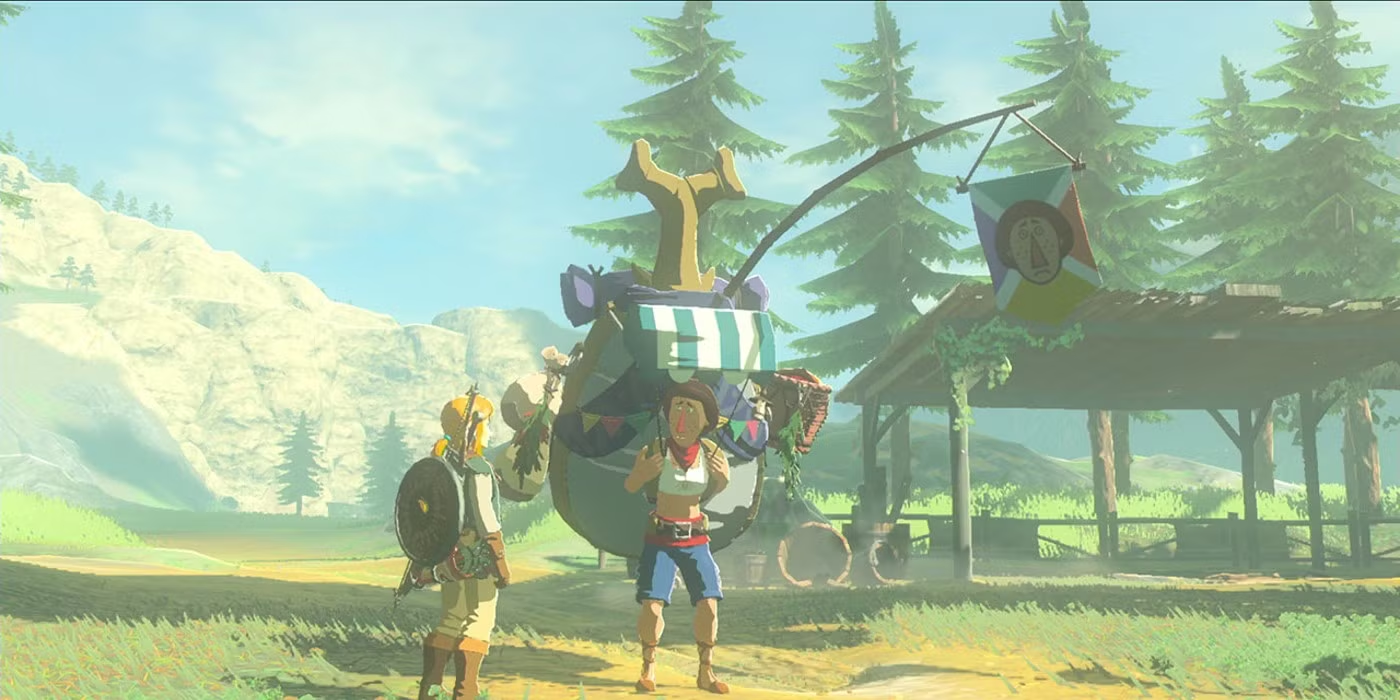The End Goals of Board Game Design
There are three end goals in board game design: to be published, to be self published with your own following, and to share your designs with friends and family.
These goals aren't mutually exclusive by any means, but each goal carries with it skills and objectives.
To Share
Designing games to share is the purest form of board game design. If you made a game, you are a board game designer, whether or not you made it for yourself or for others.
Personally, I dream about strapping the board games I've designed to a large backpack and carrying it around a board game convention like a rare goods npc.

Stumble upon him to purchase rare games.
Only the finest designs.
You don't need a well balanced or pretty game, nor do you have to think about what people are willing to spend money on. Here, of all places, you can make an extravagant $500 board game with no concept of cost, or something truly niche.
I like to playtest my games at board game themed bars. But you can also test your designs at Unpub events at conventions, or at local board game design clubs. I found my local design club on Meetup.
Publishing
The board game business is manufacturing. That means economies of scale, like 3000+ copies at a time. It is very hard to move 3000 units of anything without an existing marketing process in place. A good marketing process is just as worthwhile and involved as making the game itself, so we have to ask, are you going to do the marketing and logistics yourself?
To Self Publish
Self publishing means that you take on the responsibilty of marketing and manufacturing your game. You might still outsource the manufacturing, logistics, or even the marketing to a third party, but no publisher is managing it all for you.
Generally, if you have the time and would make a great deal more money self-publishing than having a publisher, you should self publish. But that's not true of most people. Keep in mind that you need to factor in your own labor costs: even if you paid yourself minimum wage marketing a game for +2 years is costly.
Your business becomes taking revenue from game sales to cover the cost of shipping, manufacturing, staffing, services, and etc that is required to move units of cardboard entertainment products. Self publishing is just that, you are the publisher, so you should act like it.
Crowdfunding
Crowdfunding is a means to actualize the marketing of your game, raise the capital to get economies of scale, and to reduce the risk of no one buying your game at launch.
Board game crowdfunding is so common that it may seem like the default option for self publishing, but there's no rule against using your own money to fund the manufacturing and marketing.
From my personal research between 2020-2024, board game teams made a median of 2 crowdfunding projects. Of those that funded, most raised tens of thousands of dollars. There are a couple big publishers who dominate the board game crowdfunding space.
The Wrong Reasons to Publish it without a Publisher
- You don't want someone to judge your game so you refuse to get it published.
- You're unwilling to make your game as good as it needs to be to get published.
- You assume your personal finances can handle any potential losses without a solid plan.
- You believe crowdfunding alone will solve all distribution and awareness challenges.
- You want total creative control but resist listening to outside feedback.
- You feel the product will organically go viral without advertising and outreach.
To Get Published
To be published is to use a board game publisher to handle the packaging, marketing, logistics, negotiations with distributors, and etc for you.
Consider this typical series of events laid out by Eric Hanuise, the founder of Flatlined Games.
The designer, of course, makes the first prototypes and leads playtesting until the core mechanics and gameplay have been settled ... they test it in every-wider circles, possibly at game weekends or fairs ... It is usually at this stage that publishers start to learn about the game, whether by reputation or as part of a more formal pitch process.
Publishers will tell you if they are accepting submissions online, and usually they are very specific about what they are looking for.
This typically includes a short pitch video, a description,a component list, a rulebook, and ways to play your game such as Tabletop Simulator mods or print and play pdfs. You do not pitch childrens toys to a wargame publisher, and you certainly do not publish to any and everyone you can think of. For more information on how to prepare, read How to Prepare for Pitching.
The board game business is small world. Treat everyone with respect and as if you will be metaphorically sharing an elevator together for the rest of your careers.
What if they Reject my Game
Dr Suess was rejected dozens of times.
It might not be about your idea. Publishers have development cycles of two years or more. They could already by in the the middle 5 projects, one of which is very similar to your game.
Or it could be your idea. Publishers are businesses, and to that end they don't generally like taking risky bets, working outside their core competencies, or taking in bad designs.
Not all publishers expect a finsihed design, but when in doubt, bug-free mechanics that are easy to learn and fun is always best.
Which one is for me?
Which of these goals you pick is up to you, your free time, and your finances. Whatever you choose, may all your designs be edge case free.